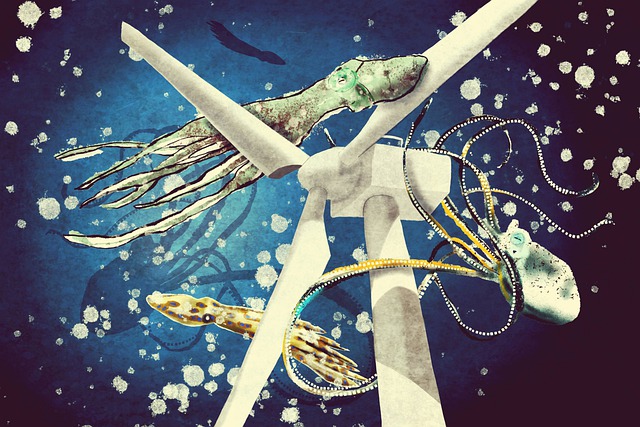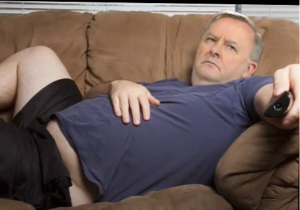‘Ideologically driven fantasy’: Labor set to announce massive WA wind farm

‘Ideologically driven fantasy’: Labor set to announce massive WA wind farm as part of move to reduce state government emissions by 80 per cent by 2030…
Revelations that the Albanese Government is set to release a significant tract of water for offshore wind farming is the latest manifestation of Energy Minister Chris Bowen’s inane and unviable renewables dream, writes Rocco Loiacono.
In June 2022, the WA state Labor government announced plans to reduce its own emissions by 80 per cent by 2030.
As part of this transition – I can now reveal in this column that – the Albanese government, together with the WA government, is set to announce very soon a huge area reserved for offshore wind farms.
However, given the geographical and economic realities present in WA, any insufficiently planned proposed offshore wind farms will most likely irreparably damage the environment (terrestrial and marine) and unnecessarily displace the fishing industry.
It is another manifestation of Energy Minister Chris Bowen’s inane and ideologically driven renewable energy fantasy, one that can never be realistically delivered.
I can reveal the declared area is earmarked from Mandurah to Dunsborough (south of Perth) and out into very deep waters, well beyond the engineering capability of any renewable project in the world.
Critically, these wind turbines will be right in the middle of the warm and nutrient rich Leeuwin Current, a zone with very strong wind potential but also the biggest impact on marine life.
The current originates in Indonesian waters and flows all the way down to, as the name suggests, Cape Leeuwin in WA’s south.
With the abundance of krill, humpback whales flourish in the Leeuwin Current and this abundance guides their annual migration from the south-west of WA to the Kimberley and back again.
Whale numbers are currently climbing at an average rate of 10 per cent a year to now be around 35,000, which scientists estimate is greater than the whale population prior to European settlement in 1829.
Offshore wind farms are comprised of either fixed or floating turbines, both of which have their problems.
If they are fixed, to install the turbine towers, reefs must be levelled to then allow steel pylons to be driven deep into the bedrock, thus damaging the ocean floor beyond repair.
The raucous piledriving will go on for months if not years, and is known to literally scare away whales, dolphins and other marine life, including commercially important species like sharks and mackerel.
The impacts on Australia’s most valuable wild caught fishery, the western rock lobster industry worth over $360 million per year, have not even been considered let alone addressed.
Critically, no undersea cabling exists to get transmission lines to the WA mainland and massive subsea channels will need to be constructed through the valuable ocean habitat and coastal reefs, up the beach and through natural vegetation to the grid connection point.
The effects of the electromagnetic fields created by the huge turbines and transmission cables on the ocean floor are internationally believed to have dramatic impacts on the behaviour of marine species, including the ability of lobsters, whales and dolphins to navigate.
Additionally, there are reports from around the world that the spinning turbines are deadly for migrating birds. Aren’t environmentalists supposed to be against this kind of ecological vandalism?
According to a brochure produced by the Australian Offshore Regulator, wind turbine towers likely proposed for Australia will be 250 metres high and will take three to five years to install.
Moreover, fixed wind turbines are limited to water depth between 30 to 80 metres, so why would the federal government announce a declared area in water depths up to 1000 metres?
In the case of floating wind turbines, their platforms require major engineering stabilisers to ensure the towers are strictly rigid during operation.
Monster steel chains are used to fix them to huge concrete footings in the ocean floor.
The steel making up each of the chain links will be at least 20cm in diameter, and current worldwide demand estimates for the installation of offshore floating turbines equates to a length of approximately 31,200 kilometres, more than three quarters the length of the Equator.
Just like fixed turbines, this demand for floating wind farms is limited to waters up to 80 metres in depth, yet Mr Bowen somehow believes it can be done in waters a kilometre deep.
Moreover, WA will be in a very long and expensive queue waiting for the steel chains to be produced in China in factories powered by fossil fuels.
So much for Mr Bowen’s claim at COP28 that “the age of fossil fuels will end”.
It is understood that official advice has been provided to government that the viability of offshore wind generation is inferior to onshore wind power – in other words it is uneconomic.
So why is the government now releasing huge tracts of valuable waters – without any scientific or socioeconomic understanding of the impacts – for a technology that is unviable and therefore will not deliver an energy solution, and that will have inevitable impacts upon whale breeding movements, migratory birds and valuable commercial fisheries?
Why is it in the UK recently that one of the largest proposed wind farms was halted due to revised economics?
Why is it that a recent tender for an area of UK waters attracted no proposals from windfarm developers?
The reason is simple – offshore wind energy production is uneconomic without significant government subsidies and guaranteed highly priced offtake agreements.
If the projects were to proceed, where would the construction experience and technical manpower be found to assemble and install these massive structures when the demand has already been soaked up in the northern hemisphere?
As noted recently by the EU’s auditors, European countries have recently committed to installing over 20,000 offshore turbines and they’re already fighting among themselves for the scant resources.
The report also expressed concern over “potential environmental effects”, including “species displacement and changes in populations’ structure, food availability or changes in migratory patterns”, to name but a few.
The taxpayer will inevitably feel the pinch of this renewable nightmare in more ways than one, first financially through government subsidies – without which the renewable energy industry cannot survive, and secondly in future power supply – the community’s energy security is under significant threat through such ill-conceived planning.
Read Chris Bowen wishes Chris Bowen a happy birthday.
Thanks to Chris Bowen’s zealotry, he cannot see that the idea of coal fired power stations being turned off and replaced by a smooth transition to solar and wind power is naïve and poorly conceived, not to mention ecologically and economically ruinous, while at the same time making no difference to temperatures.
Dr Rocco Loiacono is a legal academic, writer and translator. Earlier in his career, he spent a decade practicing as a lawyer with Clayton Utz, one of Australia’s top law firms. As well as SkyNews.com.au, he regularly contributes opinion pieces, specialising in politics, freedom and the rule of law, to The Daily Telegraph, The Herald Sun and The Australian.








